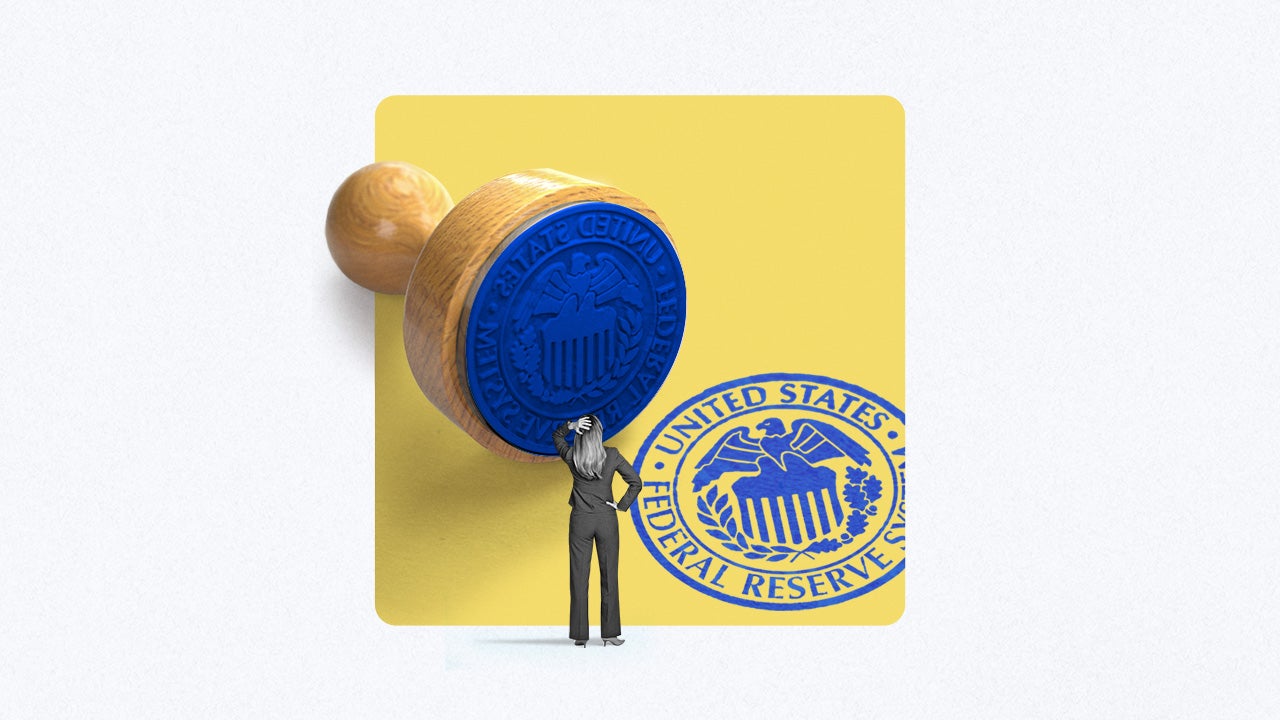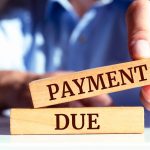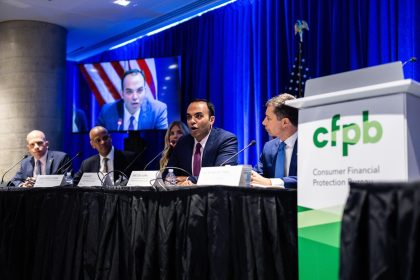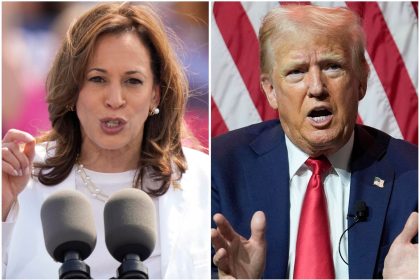Key takeaways
- The Federal Reserve’s decisions on interest rates significantly impact the economy, affecting everything from the costs consumers and businesses pay to borrow money to the job market, the stock market and inflation.
- Higher interest rates can make borrowing money more expensive for consumers and businesses, while also potentially making it harder to get approved for loans.
- On the positive side, higher interest rates can benefit savers as banks increase yields to attract more deposits. The average savings yield is now almost 10 times higher than it was when the Fed first started raising rates, and online banks often offer even higher yields.
Did you buy a home when mortgage rates were at record lows in 2020? Did you job hop during the “Great Resignation” of workers in 2021? Have you been holding off on making a big-ticket purchase this year until you can find a cheaper deal and lower interest rate?
Believe it or not, those decisions might be linked to what’s happening at the world’s most powerful central bank: the Federal Reserve.
What does the Federal Reserve do?
The Federal Reserve is the central bank of the U.S., best known as the orchestrator of the world’s largest economy. The Fed has two main economic goals — price stability and maximum employment — and uses interest rates as its main lever.
Cheap borrowing costs can be the difference between businesses choosing to hire new workers or invest in new initiatives. Expensive rates, however, can cause both businesses and consumers to pull back on big-ticket purchases — as well as hiring.
Your job security, your portfolio, your debts and the direction of the economy are all subject to the Fed’s influence. As that price of money changes, it ripples out in a lot of different directions.
— Greg McBride, CFA | Bankrate chief financial analyst
After raising interest rates a whopping 5.25 percentage points between March 2022 and July 2023, the Fed looks more likely to cut interest rates than raise them. Inflation is cooling, while the job market is slowing — natural side effects of a higher-rate environment. The question, however, is how soon officials could start letting up on the brakes. The longer they keep interest rates high, the more they risk damaging the economy.
Here are the six main ways the Fed’s interest rate decisions impact your money, from your savings and investments, to your buying power and job security.
1. The Fed’s decisions influence your borrowing costs
Higher Fed interest rates translate to more expensive borrowing costs to finance everything from a car and a home to your purchases on a credit card.
That’s because the Fed’s key borrowing rate benchmark acts as a lever for other popular loan benchmarks, such as the prime rate and the Secured Overnight Financing Rate, or SOFR. In other words, when the Fed’s rate goes up (or down), those interest rates move in lockstep — a domino effect on broader consumer loan products.
Another factor making it more expensive to borrow: the availability of money in the financial system also tends to shrink when interest rates are higher. Sometimes, rates even rise on the mere expectation the Fed is going to hike or cut rates.
Case in point, here’s how much more expensive it’s gotten to finance various big-ticket items, after 5.25 percentage points worth of rate hikes from the Fed:
| Product | Week ending July 21, 2021 | Week ending July 24, 2024 | Change |
|---|---|---|---|
| Source: Bankrate national survey data | |||
| 30-year fixed-rate mortgage | 3.04 percent | 6.9 percent | +3.8 percentage points |
| $30K home equity line of credit (HELOC) | 4.24 percent | 9.17 percent | +4.93 percentage points |
| Home equity loans | 5.33 percent | 8.59 percent | +3.26 percentage points |
| Credit card | 16.16 percent | 20.71 percent | +4.55 percentage points |
| Four-year used car loan | 4.8 percent | 8.54 percent | +3.74 percentage points |
| Five-year new car loan | 4.18 percent | 7.9 percent | +3.72 percentage points |
Borrowers often see rate adjustments reflected in one to two billing cycles — but only if they have a variable-rate loan. Consumers who locked in a loan with a fixed interest rate won’t feel any impact when the Fed raises rates.
Meanwhile, lenders will often adjust interest rates by a wider or smaller margin than the Fed’s benchmark interest rate depending on a variety of other factors — such as borrowers’ credit history or competition in the market.
“Borrowing costs tend to increase first after a Fed rate hike,” says Liz Ewing, chief financial officer at Sapient Capital who formerly worked for Marcus by Goldman Sachs. “Banks are not required to line up their interest rates with the Fed’s rate, so each bank will respond to the Fed’s rate announcement and adjust rates in their own way.”
Mortgage rates are the main exception. The 30-year fixed-rate mainly tracks the 10-year Treasury yield, rather than the federal funds rate. Both benchmarks are guided by the same macroeconomic forces. But at its most basic level, those yields rise and fall due to investors’ expectations for inflation and economic growth, along with the public’s appetite for borrowing from the government.
“We need to see meaningful improvement on core inflation and a trajectory toward slower economic growth before we’ll see a substantive pull back in mortgage rates,” McBride says. “We’re not there yet.”
Longer-term yields, and consequently, mortgage rates, might also drop when the Fed is deep in the middle of an asset-purchase plan to lower longer-term rates, effectively making the U.S. central bank the biggest buyer in the marketplace.
2. Higher rates from the Fed also make it harder for borrowers to get approved for new loans
One of the reasons higher interest rates slow demand: They cut off households from the never-ending credit spigot. And as in the aftermath of three major bank failures, lenders may even become stingier about loaning money out — meaning getting approved for a loan could get harder, too.
A March Bankrate poll showed that half of applicants have been denied a loan or financial product since the Fed began raising interest rates two years ago. Americans with credit scores below 670 are finding it toughest to access credit.
The phenomenon reflects one of the key features of a high-rate environment: Lenders sometimes grow pickier about who they lend money to, out of fear that they may not be paid back. Interest rates may climb even faster for borrowers perceived to be riskier. Financial firms may also fear that the risk of default is higher because monthly payments effectively become costlier when interest rates are high.
Financing costs and the Federal Reserve
A $500,000 mortgage would’ve cost you $2,089 a month in principal and interest when rates were at a record low of 2.93%, according to an analysis using Bankrate’s national survey data. With the average 30-year fixed-rate mortgage hitting 6.9%, that same payment would now cost $3,293 a month, a 58% increase.
It also does some of the Fed’s work for it. Consequently, less access to credit leads to less spending — weighing on demand and taking some of the steam away from inflation.
“Tighter credit hits borrowers with less-than-stellar credit ratings the hardest – whether the borrower is a consumer, corporation, municipality or a national government,” McBride says. “The business of lending doesn’t stop but is instead more intensely focused on borrowers posing the least risk of default.”
3. Savings accounts and certificates of deposit (CDs) mimic the Fed but will fall before the Fed cuts
You might not be able to borrow as cheaply as you used to, but higher interest rates do have some silver linings, especially for savers. Banks ultimately end up increasing yields to attract more deposits.
The average savings yield is more than seven times higher than it was when the Fed first started raising rates, rising from 0.08 percent to 0.6 percent as of July 22, the highest in over a decade, according to national Bankrate data.
Meanwhile, a 5-year certificate of deposit (CD) was paying 0.39 percent at the beginning of January 2022, before the Fed began raising rates. Today, it’s offering an average yield of 1.43 percent.
But there are banks offering even more money in interest. Finding them could help consumers preserve some of their purchasing power — and even beat inflation. Those yields are at online banks, which are able to offer more competitive interest rates because they don’t have to fund the overhead costs that depository institutions with physical branches have.
A big example: The highest-yielding online savings account was offering an annual percentage yield (APY) of 0.55 percent at the beginning of 2022. Today, it’s offering 5.45 percent.
“Retail savings rates often move a bit slower in a rising-rate environment, but can also fall slower in a declining-rate environment,” Ewing says. “Customers who have high-yield savings products could be getting good value in the long run.”
Yields, however, are beginning to edge lower on the expectation that the Fed will eventually be able to cut interest rates this year. The top 5-year CD is now paying 4.5 percent, down from 4.85 percent just last October. A 1-year CD, meanwhile, was offering a 5.75 percent APY back in December. That’s since fallen to 5.3 percent as of July 23. The descent is likely to pick up speed once the Fed clearly signals rate cuts are on the horizon.
“Now is the time to lock in high-yielding CDs,” McBride says. “There is no advantage to waiting, as yields will trend lower as we get closer to the first Fed rate cut and accelerate further the longer you wait.”
4. The Fed’s rate decisions influence the stock market — meaning your portfolio or retirement accounts
Cheap borrowing rates often bode well for investments because they incentivize risk-taking among investors trying to compensate for lackluster returns from bonds, fixed income and CDs.
On the other hand, markets have been known to choke on the prospect of higher rates. Part of that is by design: Many investors reshuffle their portfolios away from stocks and instead toward traditional safe-haven investments — such as bonds or CDs — as yields rise. Those moves drain excess liquidity from the stock market.
It’s also because of worries: When rates rise, market participants often become concerned that the Fed could get too aggressive, slowing down growth too much and perhaps tipping the economy into a recession. Those concerns battered stocks in 2022, with the S&P 500 posting the worst performance since 2008 in the year.
Stocks have been less volatile so far this year, smashing multiple records as investors cross their fingers for rate cuts. Lately, the S&P 500 is about 5 percent off its latest record high but up nearly 20 percent since the start of 2024.
As the Fed grapples with what to do with interest rates, it’s important to keep a long-term mindset, avoiding any knee-jerk reactions and maintaining regular contributions to your retirement accounts. When the Fed raises rates, that’s mostly to make sure the financial system doesn’t derail itself by growing too fast. Not to mention, falling stock prices can create tremendous buying opportunities for Americans hoping to bolster their portfolio of long-term investments.
“Mom-and-pop investors should focus on the bigger picture: An economy that’s growing is conducive to an environment where companies will grow their earnings,” McBride says. “Ultimately, a growing economy and higher corporate earnings are good for stock prices. It just might not be a smooth road between here and there.”
5. The Fed has a major influence on your purchasing power
The Fed’s interest rate decisions are bigger than just influencing the price you pay to borrow money and the amount you’re paid to save. All of those factors also have a prevalent influence on your purchasing power as a consumer.
Low interest rates intended to stimulate the economy and juice up the job market can fuel demand so much that supply can’t keep up — exactly what happened in the aftermath of the coronavirus pandemic. All of that can lead to inflation.
High interest rates, meanwhile, are designed to weigh on inflation. Americans may decide to delay a purchase or investment that requires financing, weighing on consumer spending. Not to mention, higher interest rates can lead to joblessness if the economy slows too much. Without a paycheck, consumers have the least amount of buying power at all. The Fed is the country’s No. 1 inflation fighter because its tools are seen as the most effective.
Still, it can take some time before consumers feel a difference. The Fed can’t drill for oil or produce more food; all it can do is weigh on demand so much that it balances back out with supply, leading to a lower pace of price increases. Research suggests it takes a full year, if not longer, for one rate hike to make its way through the entire economy.
Inflation has noticeably improved since surging to a 40-year high of 9.1 percent in June 2022. As of June, overall inflation is up 3 percent from a year ago, now just a percentage point above the Fed’s 2 percent goalpost.
Fed officials, however, don’t target CPI. Instead, they prefer to look at the personal consumption expenditures, or PCE, index from the Department of Commerce. That gauge is showing faster improvement, though still indicating that inflation is in a holding pattern, with overall prices rising a slower 2.5 percent in June from a year ago. Prices when excluding volatile food and energy costs rose 2.6 percent over the same 12-month period.
6. The Fed influences how secure you feel in your job or how easy it is to find a job
One of the biggest corners of the economy impacted by higher interest rates is the job market. Expansions that seemed wise when money was cheap might be put on the backburner. New opportunities made possible by low interest rates are no longer on the table.
The job market has clearly cooled since the Fed started raising interest rates. Unemployment hit a two-plus year high of 4.1 percent in June, Labor Department data shows. Employers have created about 177,000 jobs, on average, over the past three months, down a 222,000 six-month moving average. Meanwhile, companies are also dwindling their hiring plans, with the number of job openings on the market falling to 8.1 million in June after soaring as high as 12 million in March 2022.
Layoffs are still historically low, but some industries have been tougher for jobseekers than others. Big tech firms including Meta, Amazon and Lyft laid off thousands of workers since the Fed started raising rates. Data from outplacement firm Challenger, Gray & Christmas shows job cuts nearly doubled in 2023 compared with 2022, hitting the highest total since 2009 when excluding pandemic-related layoffs. Job growth, meanwhile, is primarily driven by hiring in health care, social assistance and government, with the sectors accounting for nearly two-thirds (62 percent) of all positions created since June 2023.
Revealing just how interconnected the economy is, sometimes a booming labor market can also contribute to inflation. When there’s a mismatch between labor demand and supply, companies often boost wages to recruit more workers.
How much tight labor markets are currently contributing to inflation is also up for debate. Research from the San Francisco Fed suggests higher wages have only contributed 0.1 percentage point to the growth to the Department of Commerce’s measure of inflation, excluding food and energy. Companies have been able to eat the higher cost of labor or make savings down the line with increased automation or efficiency, economist Adam Shapiro suggested in the research.
Bottom line
Raising interest rates is a blunt instrument with no method of fine-tuning specific corners of the economy. It simply works by slowing demand overall — but the risk is that the U.S. central bank could do too much. Put in the mix that officials are trying to judge how rates impact the economy with backward-looking data, and the picture looks even darker.
While the odds of a soft-landing have looked promising, eight of the Fed’s past nine tightening cycles have ended in a recession, according to an analysis from Roberto Perli, head of global policy at Piper Sandler.
A higher-rate environment makes prudent financial steps all the more important, especially having ample cash you can turn to in an emergency.
Boosting your credit score and paying off high-cost debt can also create more breathing room in your budget in a higher-rate environment. Use Bankrate’s tools to find the best auto loan or mortgage for you, and shop for the best savings account to park your cash.
“Absent a complete about-face from the economy, interest rates aren’t likely to come down soon enough, or fast enough, to provide meaningful relief to borrowers,” McBride says. “Inflation will need to decline further before the Fed will feel comfortable beginning to trim interest rates.”
Read the full article here

















